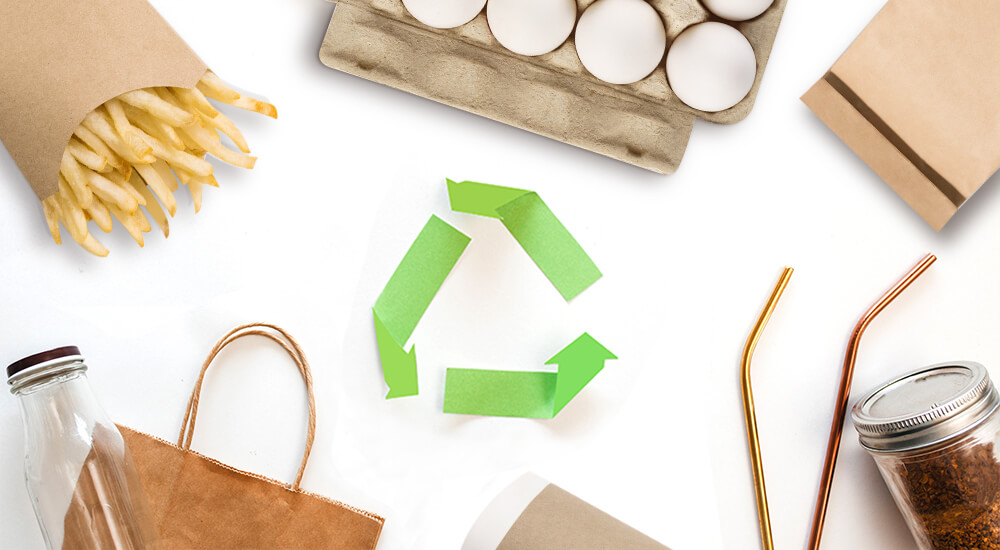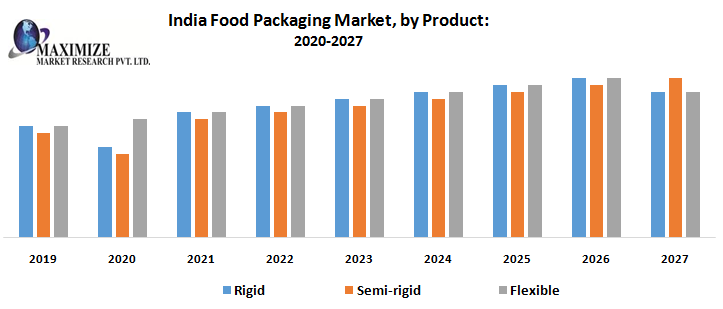Let's Talk
We would love to hear from you. Want to know more about our services or have any questions? Say Hi!
Types of Food Packaging Materials

The fifth largest sector in India’s economy, packaging is also one of the fastest growing segments in the country. As per Packaging Industry Association of India (PIAI), the industry is growing year-on-year at the rate of 24 to 27 percent. The increasing population and income levels are the catalysts in this growth. In this blog, let’s learn about the types of packaging materials used in food industry.
Packaging materials used in food industry comes in a variety of material, shapes and colours that serve different functions in context to preserving the properties of the food item that they carry inside. Since food often falls in the impulse buying category, the core purpose of packaging is presentation, preservation, and safety of the food.
Deciding the appropriate material for packaging is therefore a product of what you seek to accomplish from it. This purpose could vary from shielding the food against moisture, temperature, oxygen, light, and biological micro organisms.
Conventional packaging materials used in food industry are metal, paper, glass and plastics.
Types of Food Packaging Materials
Metal Food Packaging
Varied shapes of metal-based food packaging are available in the market, such as enclosures, cans, containers, tubes, films and caps. Cans can be aluminium or steel of the kind mostly used for wet/liquid food and beverages. These days, progressive manufacturers use recyclable material, layered with organic material to avoid contact between the food and metal. Metal choice is dependent on:
- Strength and rigidity
- Blocking gas and moisture
- Pressure resilient
- Temperature resistant / tolerant
- Corrosion resistance thru coatings
- Can be sterilized
- Can be right away decorated/labelled
Along with these functional features, a packaging design agency must also come up with attractive features for packaging design to make it a compelling pull factor for the customer.
Paper Based Food Packaging
Paper is one of the oldest packaging materials in use since the 17th century. Paper/paperboard is typically used for dry food or wet-fatty foods. Popularly used material is corrugated boxes, paper plates, milk/folding cartons, tubes, sacks, labels, cups, bags, leaflets and wrapping paper. Features that make paper packaging useful:
- Paper tears effortlessly along the fibres
- Folding is easiest from end to end fibres
- Fold durability is highest across fibres
- Stiffness level is good (cardboard)
Also, paper can be laminated to improve additional strength and barrier properties. It can be gloss or matt-finished. Other materials used are foils, plastics for laminating paperboard.
Glass as Food Packaging Material
Glass is another popular packaging material in use for ages. The initial evidence of glass-making is found in 7000 B.C. Glassblowing of bottles was invented by the Romans in 50 B.C. in the modern-day Lebanon. To date, glass is one of the most dependable and least toxic materials for packaging food and drinks.
Products with high-value are still packaged in glass containers because of its plush look and aroma-preservation property. Glass comprises of soda, lime and silica – with other additional elements based on the requisite characteristics and is manufactured via melting these materials at very high temperature followed by container formation. Glass is preferred as a packaging material for the following reasons:
- Inertness
- Can be sterilized
- Barrier to moisture and gas
- Imperviousness
- Tamper-resistant
- Microwavable
- Pressure impervious to a certain degree
- Can be beaten into diverse shape
- Transparency makes the product inside clearly visible
- High recycle value
The versatility of glass to design features also makes it a popular choice with any packaging design agency.
Plastic Food Packaging Material
Plastic is another popular material used in food packaging. It finds widespread use in bottles, bowls, pots, trays, foils, cups, bags and pouches. Indeed 40% of all plastic manufactured is used in the packaging industry. The win-win factors that go in its favor are comparatively lower cost and its lightweight. Attributes that make it an apt choice for food packaging:
- Lightweight
- Can be molded into unlimited shapes
- Chemical-resistance
- Can create rigid containers or flexible films
- Process ease
- Impact-resistant
- Directly decorated/labelled
- Heat-scalable
On the flip side, the health concerns associated with the use of this material has been in question from a long time.
Categorize Food Packaging Based on its Texture
Types of packaging materials used in food industry categorized in terms of their texture are:
Rigid
Caps, trays, jars, bottles and cans.
Flexible
Stand-up packets, bags, squeezable tubes, shrink/cling/bubble wraps, vacuum bags and foam trays.
Semi-rigid
Tetra packs, caps/closures and boxes.
Impact of Covid Pandemic on Food Packaging Industry
In India Food Packaging Market – Industry analysis and forecast 2020-2027 by Product, Material and end-user, Maximize Market Research Pvt. Ltd. (MMR) has analyzed the return on investment (ROI) in the food packaging industry due to theCOVID-19 pandemic. The study predicts that the use of plastic packaging material which was earlier expected to rise at a rate of about7% year-on-year, could start slowing down in tandem with the Indian government’s drive to make India totally free of single-use plastics by 2022.
In other words, we are going to cast aside all packaging material that are made from poor-grade plastics that are used just once and then are rubbished and thrown to landfills.
It is also predicted that the country will see continual demand for PET bottles, along with creating new demand for liquid packaging cartons because of their longer shelf life and transportation ease. Along with this, the demand of renewable goods in paper, ceramic and wood will shoot up in comparison to plastics.
Growing Piggyback on E-Commerce
It’s not difficult to guess why the growth of the e-commerce market has fueled demand for suitable packaging options. India’s e-commerce retail market intensifies demand for rigid packaging, specifically for corrugated boxes and cartons. Rigid packaging accounts for 80% of the country’s holistic packaging market. A big contributor to this growth is online food ordering brands such as Zomato, Uber EATS and Swiggy that have introduced 100% tamper-proof packaging to the industry.
Understandably, after COVID19, buyer perception surrounding packaged food is going to be very sensitive and skewed towards eco-friendly packaging. This could cross US$ 75 Bn by 2020, according to the MMR research.

New Food Packaging Regulations by FSSAI
At the start of 2020, the Food Safety and Standards Authority of India (FSSAI) declared new packaging norms and regulations. Some measures under the new protocol include, among other things, banning of recycled plastics and newspaper used. Post COVID19 lockdown, the industry is expecting new, more stringent regulations on practical packaging options to promote aggressive use of environment-friendly packaging materials.
Want to Explore More About Food Packaging?
-
How Packaging Influences Consumer Behavior to Generate More ROI
-
Futuristic Creative Food Packaging Ideas


